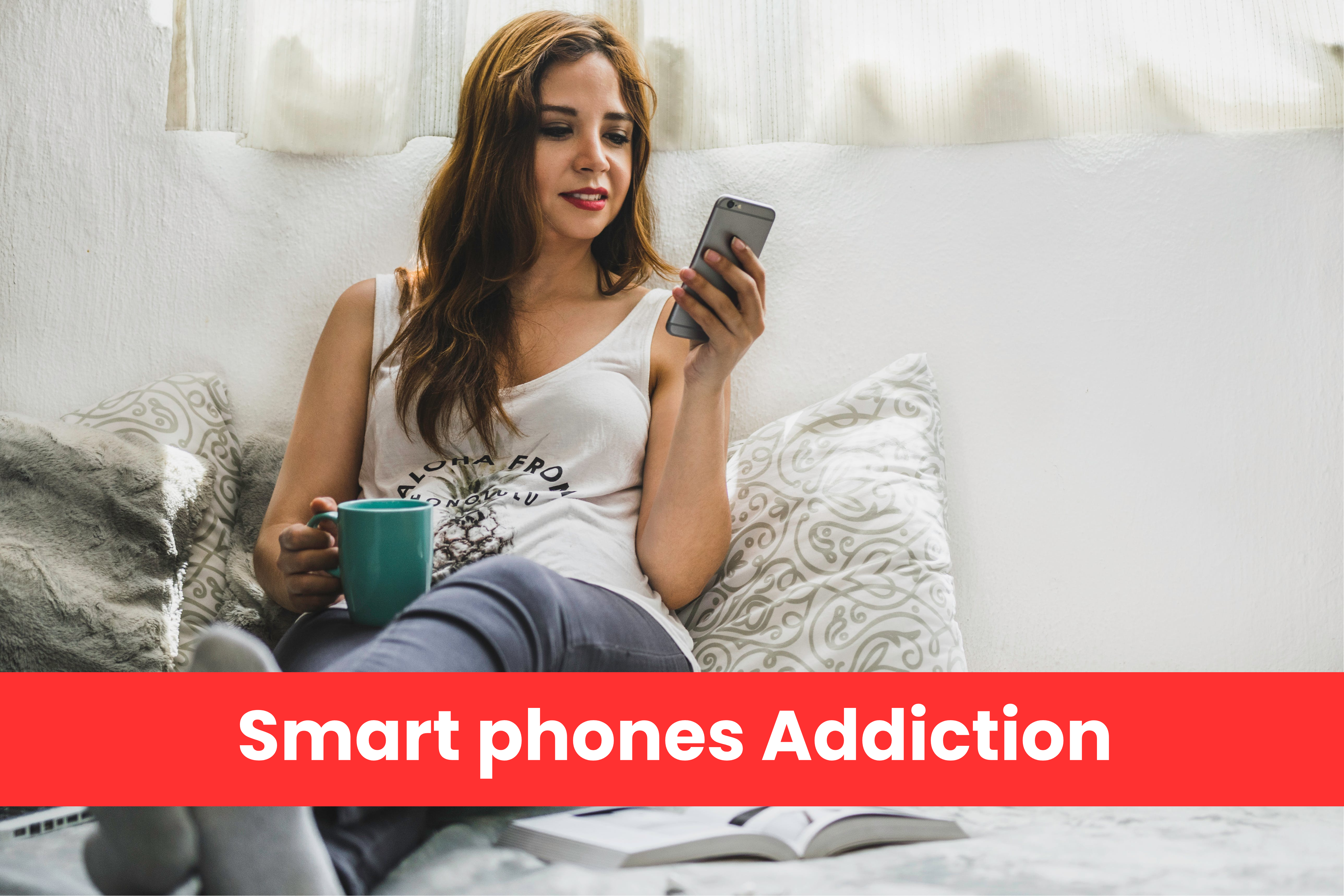- Why are smartphones hard to ignore?
Imagine a situation where you misplace, lose, or cannot access your smartphone! About 73% of people claim to experience mild states of panic, depression, and anxiety until it’s found. One of the statistical surveys suggests that adults in the US spend an average of 2-4 hours per day tapping, typing, and swiping on their devices—that adds up to over 2,600 daily touches.
The main reason for our attachments to these devices is the social environment they provide. For example, if a person posts a picture or status on social networking platforms like Facebook, Snapchat, Instagram, etc., it will be continuously running through his or her mind about the number of people who all viewed, liked, shared, and commented on it. Most of us have become intimately entwined with our digital lives.
Studies are beginning to show links between smartphone usage and increased levels of anxiety and depression, poor sleep quality, and an increased risk of car injury or death. Many of us wish we spent less time on our phones but find it incredibly difficult to disconnect.
- What is Dopamine?
Dopamine is a hormone and a neuromodulatory molecule that signals from one neuronal cell to another and plays a pivotal role in important body functions, movements, and memory. It is also associated with mood elevation, viz., pleasure and motivational feelings. It is often known as the “happy molecule”.
- What is the connection between a smartphone and dopamine?
Our human brain contains connections between different parts of the brain through a signal or chemical messenger called neurotransmitters.
Dopamine is one of them and has four major pathways: one is the tuberoinfundibular pathway, which regulates the release of the Prolactin hormone, which is required for milk production, and the other three are reward pathways. Specifically, the mesocortical, mesolimbic, and nigrostriatal pathways become non-functional in cases of addiction.
All three pathways become active when anticipating or experiencing rewarding events. To explain more, these pathways are associated with a stimulus, i.e., a sequence of behaviours and a feel-good reward. Hence, every time a response to a stimulus results in a reward, these associations become stronger through a process called long-term potentiation. This process strengthens connections between brain cells called neurons by increasing the intensity at which they respond to particular stimuli.
Cognitive neuroscientists found that rewarding social stimuli—laughing faces, positive recognition by our peers, messages from loved ones—activate the same dopaminergic reward pathways. Smartphones have provided us with a virtually unlimited supply of social stimuli, both positive and negative. Every notification, whether it’s a text message, a “like” on Instagram or a Facebook notification, has the potential to be a positive social stimulus and dopamine influx.
- How do social media apps take advantage of dopamine-driven strategies?
Many apps implement a reward system to keep you engaged as much as possible. Variable reward schedules were introduced by psychologist B.F. Skinner in the 1930s. If one perceives a reward to be delivered at random and if checking for the reward comes at little cost, this results in checking habitually (e.g., gambling addiction). If you pay attention, you might find yourself checking your phone at the slightest feeling of boredom, purely out of habit. Programmers work very hard behind the scenes to keep you doing exactly that.
For instance, for 5 years, Facebook notified only an initial set of connections, creating that crucial link between notification and social reward. But as you use Facebook more and begin interacting with various groups, events, and artists, that notification centre will also become more active.
Instagram’s notification algorithms sometimes withhold “likes” on your photos to deliver them in larger bursts. So when you make your post, you may be disappointed to find fewer responses than you expected, only to receive them in a larger bunch later on. Those initial negative outcomes have primed your dopamine centres to respond robustly to the sudden influx of social appraisal.
Hence, this use of a variable reward schedule takes advantage of our dopamine-driven desire for social validation and optimizes the balance of negative and positive feedback signals until we become habitual users.
- What are the benefits of limiting the use of smartphones?
One can notice the life-changing benefits of limiting the usage of smartphones, which are as follows:
- With less stimulation from calls, texts, social media updates, and “urgent” emails, you may have less chronic stress and anxiety.
- One can think more clearly because they aren’t bugged by communication and overstimulation.
- Deeper connections with others. When you put your phone away, you’ll improve your relationships because you’ll be present and able to focus on the other person and hear what they are saying.
- Sharper critical thinking and creativity Think of the last time you wanted to remember a fact but couldn’t. There’s a good chance you said, “I’ll Google it.” While that’s not a terrible thing, immediate gratification shuts the door to critical thinking and wonder.
- Less screen time can help you sleep better and be more mindful of your meals. Getting enough sleep and eating healthfully are two of the most critical aspects of your physical and mental health.
6.How one can break smartphone addiction?
- Self-control and firm determination towards limiting the use of smartphones
- Monitor how often you reach for your phone.
- Turn off notifications. The constant alerts can create unrest and even fear. When you turn off distractions, you can focus on completing the task at hand.
- Schedule the phone usage times and strictly follow them.








0 Comments